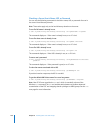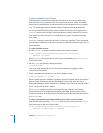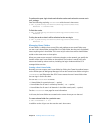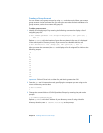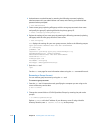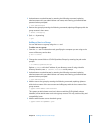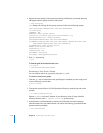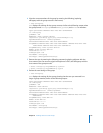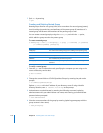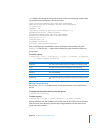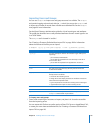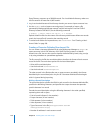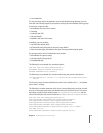
114 Chapter 8 Working with Users and Groups
6 Review the new settings of the group by entering the following command, replacing
officegroup with the group account’s short name:
> read
officegroup
dscl displays the settings for the group account, similar to the following output:
apple-generateduid:4B3A5678-E9C1-2EC3-4567-891D234E5678
cn: officegroup
gidNumber: 600
MemberUid: mchen ajohnson bmiller
objectClass: posixGroup apple-group extensibleObject top
AppleMetaNodeLocation: /LDAPv3/ipaddress
GeneratedUID:4B3A5678-E9C1-2EC3-4567-891D234E5678
GroupMembers:2B3A4567-E8C9-9EC2-3456-789D123E4567 1B2A3456-E7C8-9EC1-2345-
678D912E3456 8B9A1234-E5C6-7EC8-9123-456D78E9123
GroupMembership: mchen ajohnson bmiller
Member: mchen ajohnson bmiller
PasswordPlus:********
PrimaryGroupID: 600
RecordName: officegroup
RecordType: dsRecTypeStandard:Groups
7 Quit dscl by entering:
> quit
To find the guid of the administrator user:
> cd /Users/
> read adminusername GeneratedUID
Removing a User from a Group
You can remove users from a group by using the dscl tool.
To remove a user from a group:
1 Start the dscl tool in interactive mode, specifying the computer you are using as the
source of directory service data:
$ dscl localhost
>
2 Change the current folder to /LDAPv3/ipaddress/Groups by entering the path at the
prompt:
> cd /LDAPv3/
ipaddress
/Groups
Replace
ipaddress
with the IP address of your directory server. If using a NetInfo
directory domain, enter cd /NetInfo/root/Groups at the prompt.
3 Authenticate as an administrator by entering the following command, replacing
adminusername with your administrator user name, and entering your administrator
password when prompted:
> auth
adminusername



